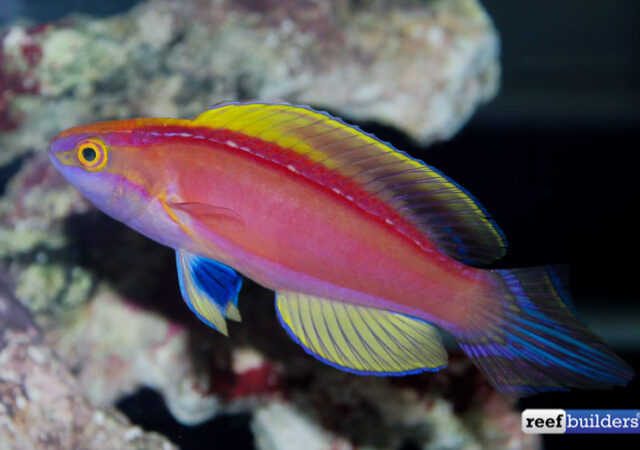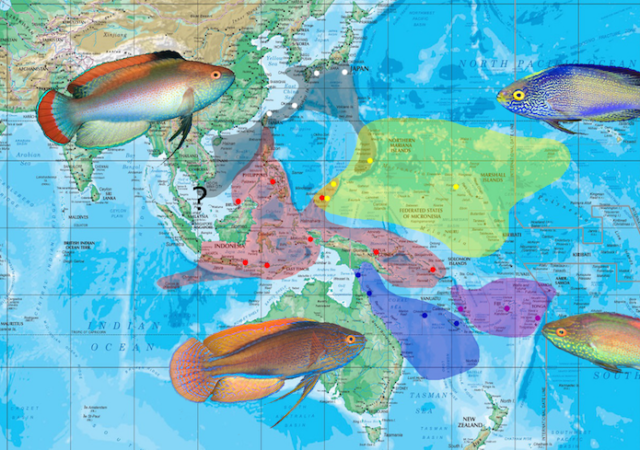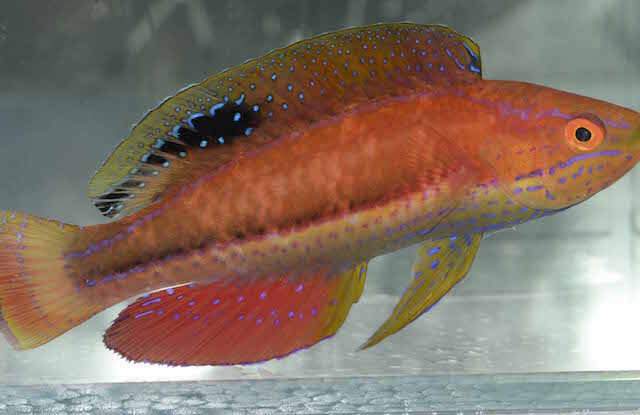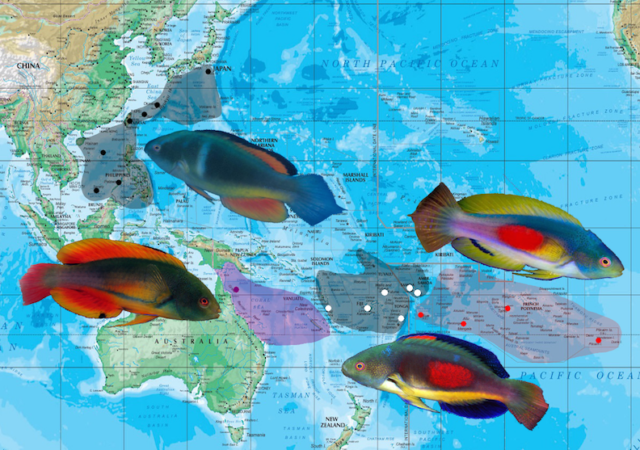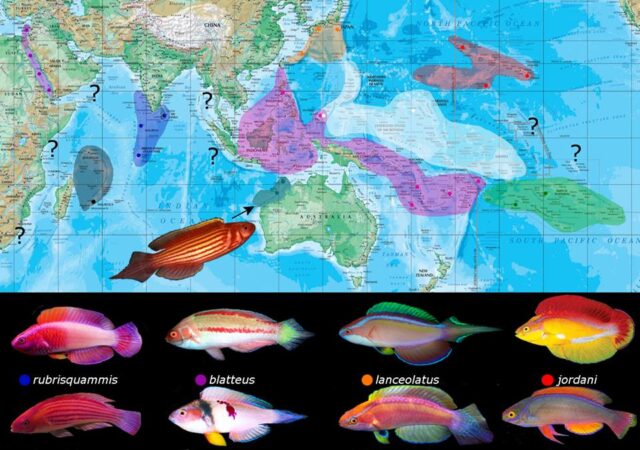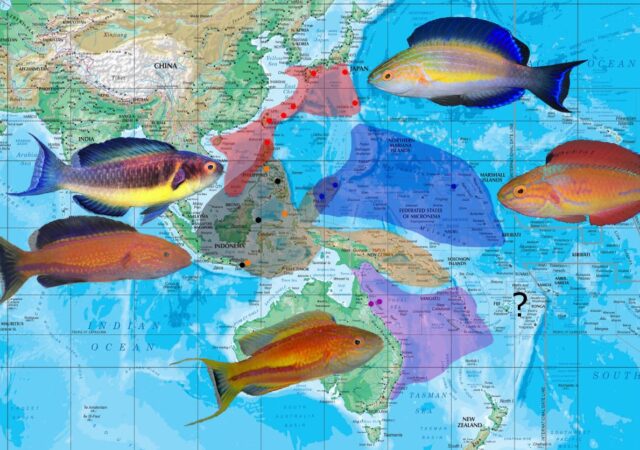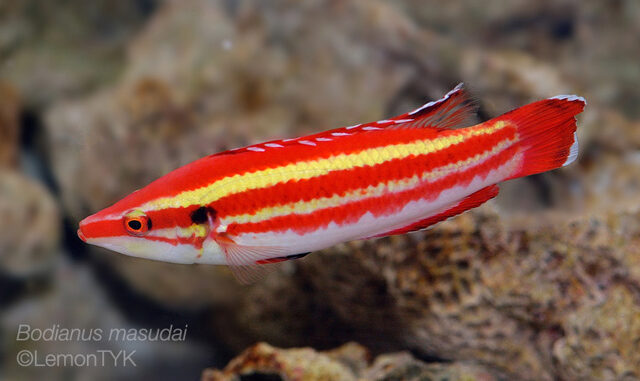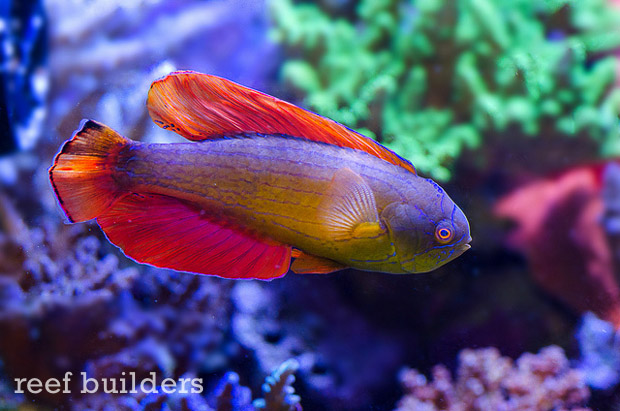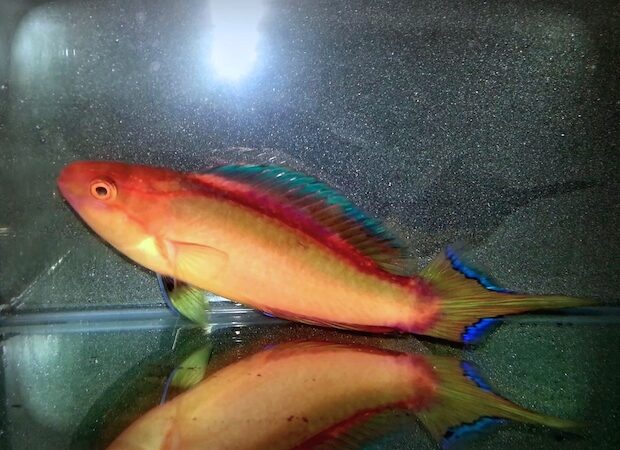Among the two dozen or so most commonly encountered fairy wrasses, the elusive rose banded fairy wrasse, Cirrhilabrus roseafascia is not among them. This species is a relative newcomer to the documented fairy wrasse group, having only been described in 1982.…
Search Results For: pintail
Calling all MACNA attendees. We want you to clip all the fins!
This is a public service announcement for all Fairy Wrasse aficionados. As you may have known, we are embarking on a cursory phylogenetic review of the genus Cirrhilabrus in all its intimate and baroque detail. As fun as it is…
3.1 Fairy Wrasses: The rubrimarginatus group
The rubrimarginatus group is home to some of the most well-known (and well-loved) of the Fairy Wrasses. The group can be divided rather equally into two clades, each with their own separate diagnostic features. The males attain fairly large sizes,…
Is Japan really home to any endemic Fairy Wrasses? Cirrhilabrus katoi disagrees
The reefs of Japan are known to harbour unique fauna found nowhere else on this earth. Rife with endemics, species such as Centropyge interrupta, Chaetodon daedalma, Genicanthus takeuchii, Chromis mirationis and a whole hodgepodge of other reef fish call this…
2.1 Fairy Wrasses: The scottorum group
Moving away from the first major Cirrhilabrus clade, we explore the various species groups that differ by having larger and longer pelvic fins. The scottorum group is a small conglomeration of two confirmed species, one of which is highly polychromatic…
1.3 Fairy Wrasses: The lanceolatus group
The members of the lanceolatus group are some of the largest and showiest fairy wrasses, collectively celebrated for their grandiose caudal fin and chromatic brilliance. The group spans most of the Indo-Pacific, with its various species occupying a series of…
1.2 Fairy Wrasses: The lunatus group
Cirrhilabrus johnsoni was first described in 1988 based on specimens collected in the Marshall and Caroline islands. This small species served as the twentieth member of a rapidly expanding genus, and was decidedly different with a crescent shaped caudal fin adorned…
Opulent Osaka part 3: Dr. Shimokobe’s deluge of deepwater treasures
We’ve arrived at our third installation of our Osaka recount and if you’re still following, then thank you, and we hope you’ve enjoyed parts 1 and 2. We visited one of our favourite aquarist in Osaka, and we’ve featured his…
Behind the face of LiveAquaria – Kevin Kohen’s fish collection part 2
Here’s part two of our trip to LiveAquaria and a peek inside Kevin Kohen’s office and his fish collection. Incase you still do not know, Kevin Kohen is the man behind the company and as mentioned in part 1 of…
A spectacular terminal male Cirrhilabrus lanceolatus debuts in Singapore
For hardcore wrasse lovers, Cirrhilabrus lanceolatus needs no introductions. For the less avid wrasse aficionados, here’s a little short intro before we dive into the story proper. Cirrhilabrus lanceolatus is a deepwater japanese endemic not to be confused with Cirrhilabrus…


